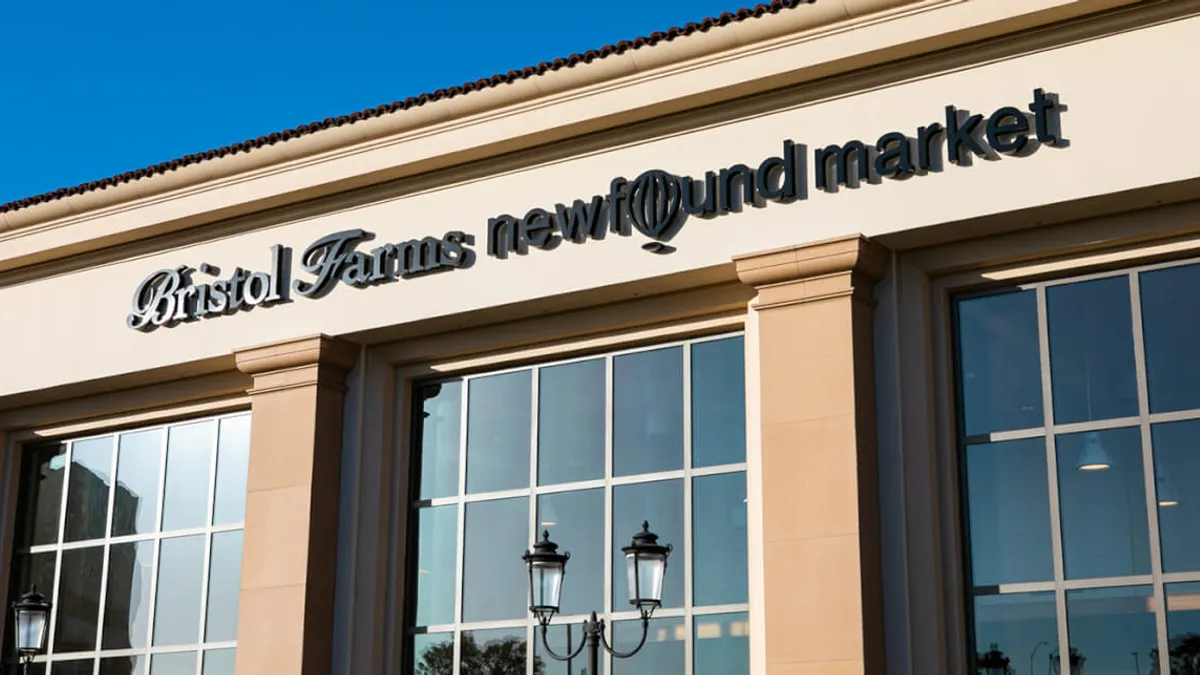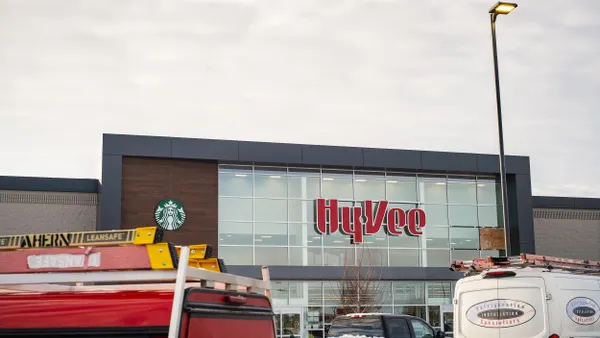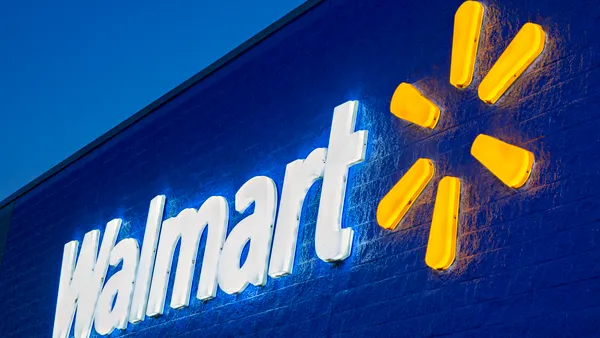When customers shop at one of Good Food Holdings’ grocery banners, the parent company wants them to feel like their shopping trip — be it online, in-store or a blend of the two — is curated just for them.
The Carson, California-based holding company has already established a reputation for running high-end banners: Bristol Farms, Lazy Acres, New Seasons Market, New Leaf Community Markets and Metropolitan Market. As it looks ahead, its leaders see an opportunity to bring that high-touch, personalized experience into the digital age.
“[We’re] imagining how we’re going to get the point where a consumer can walk into a store and I know what they've purchased, I know what their list is, I know what your dietary restrictions are, and I can take those 40,000 items that I have in my store and make it much easier for you as a customer to get to the things you actually want,” Good Food Holdings CEO Neil Stern said.
Good Food Holdings, which is owned by South Korean retailer E-Mart, has begun testing cutting-edge innovations like a “connected store,” smart carts, electronic shelf labels and more in an effort to bring this curated digital shopping vision to life. Its unique structure as a conglomerate of small regional chains gives it some unique advantages in testing, learning and scaling new opportunities, executives believe.
But Good Food Holdings, like many other grocery companies, is still in the very early stages of realizing that vision. And it’s unclear what, exactly, a more personalized shopping experience will look like. Will it include the sort of high-tech shopping carts, digital shelf labels and back-end technologies the company and its banners are now testing? Or maybe none of these?
Like most regional grocers, capital and labor restrictions are also challenging Good Food Holdings and its digital innovation journey. The company has to carefully choose what it tests and scales, and has partnered with numerous third parties to help enable its omnichannel offerings.
“As a smaller retailer, we have to be really careful on how we're placing our bets,” Stern said.
Making connected stores
While its high-touch stores are still drawing in-store consumers, Good Food Holdings is also seeing the convenience of online shopping shifting consumer behaviors, said Scott DeGraeve, the retailer’s chief digital officer.
“Customers are kind of channel agnostic. So that's how we have to treat it — however they want to shop, we should be able to provide them a way to shop like that,” said DeGraeve, a former executive with AutoStore and Ahold Delhaize.
The company and its banner chains are trying to embrace this shift. At a Metropolitan Market store in Mercer Island, Washington, for instance, signs throughout the aisles recently exhorted shoppers to try the company’s curbside pickup offering. “Let us shop for you,” one sign in the pantry section read.
Good Food Holdings is also in the process of implementing new websites for all five banners and installing Storefront Pro, Instacart’s white-label e-commerce platform, across all of the banners, DeGraeve said. The company also offers delivery through the Instacart and DoorDash marketplaces, partnerships that add “incrementality” to the company’s e-commerce operations, said DeGraeve.
Inside its stores, Good Food Holdings is testing out new systems that promise to make shoppers’ trips more convenient and connected. Its Bristol Farms Newfound Market banner in Irvine, California, which opened last March, has been serving as a testing ground for several of the digital components in Instacart’s Connected Stores initiative, including that company’s Caper smart carts, Food Storm prepared food-ordering software and electronic shelf labels known as Carrot Tags.
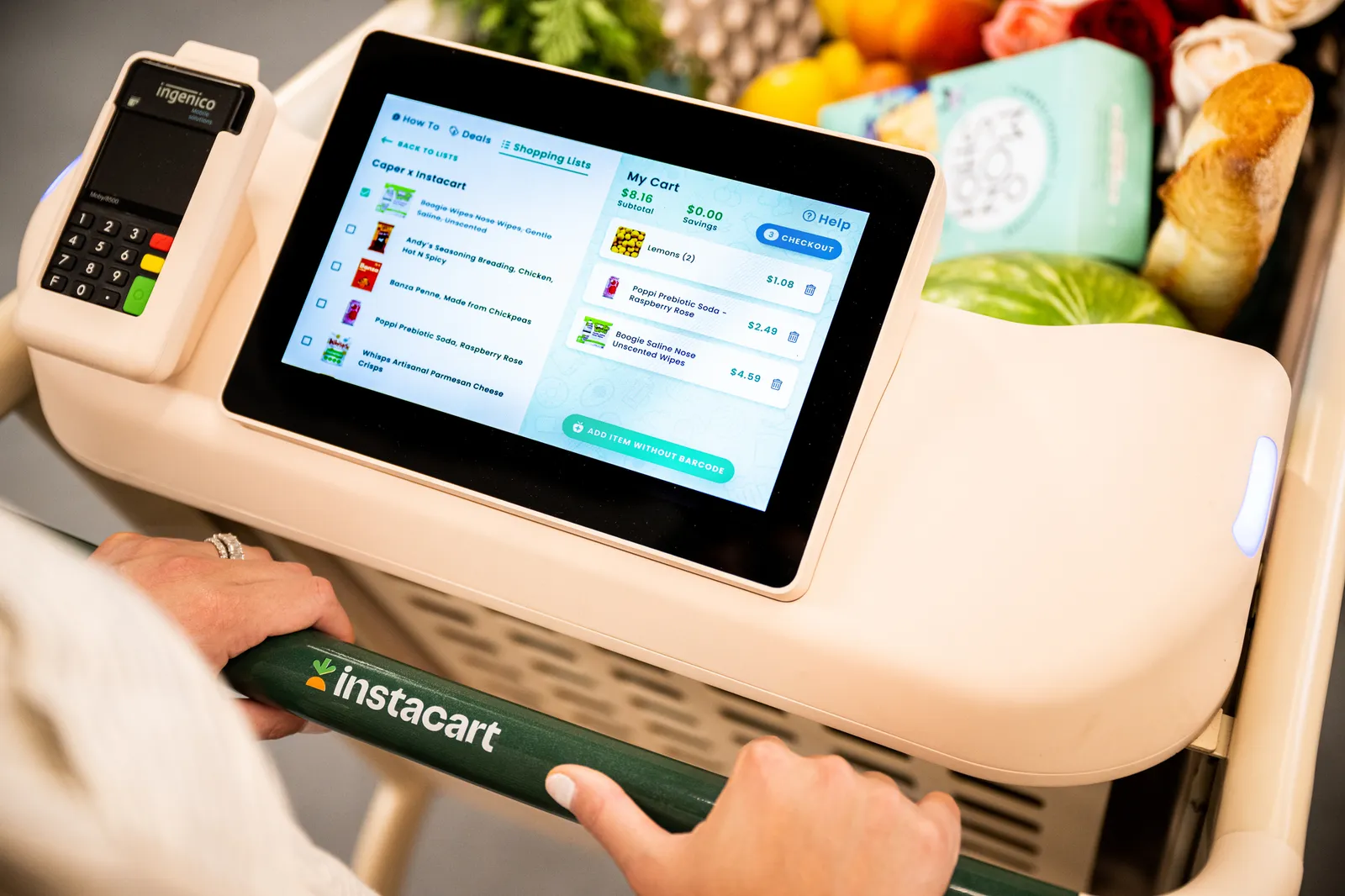
Good Food Holdings plans to expand its test of the Caper carts to two additional stores over the next quarter as the holding company works to better determine “how to best utilize them in-store and figure out how far to take it,” DeGraeve said, noting that the company will be looking at metrics such as customer penetration levels and basket sizes.
One of the upcoming Caper deployments will be at a high-volume, high-density store, Stern said.
“Is that cart going to justify — either from an ROI like a pure business standpoint or from a customer satisfaction standpoint — being something we want to roll out? Right now it's too early to tell,” Stern said.
DeGraeve said Good Food Holdings envisions customers checking in with their loyalty programs through smart carts, which link to their purchasing data, and then having lights on the digital tags flag specific items, like ones they’ve ordered before or products that are on sale. Those flashing ESL lights can also help with e-commerce fulfillment, DeGraeve added.
Stern said Good Food Holdings sees the potential to offer promotional games and personalized offers for consumers using smart carts, along with serving up ads for brands.
“I'm very excited about ChatGPT coming on a smart cart,” Stern said. “A store customer says, ‘Hey, I have chicken, onions and tomatoes — what can I do?’ And the answer is, ‘Hey, let's give you this great recipe for chicken.’”
Good Food Holdings is also adding Instacart’s Scan & Pay solution, which allows customers to scan and pay for products, including loose items like weighted produce, using a mobile browser. A new online catering menu at Bristol Farms, meanwhile, makes the ordering process more efficient for consumers, DeGraeve said.
Eventually, Good Food Holdings plans to tie the online catering system, which is offered through Instacart’s FoodStorm service, into its normal online grocery shopping experience so that customers can buy made-to-order items with their regular grocery purchases, DeGraeve said.
The Bristol Farms store in California isn’t the only location in Good Food Holdings’ ecosystem that’s testing leading-edge technology. At the Mercer Island Metropolitan Market, electronic shelf labels are in place throughout the store. In select spots, large digital shelf labels offer additional product information — like one situated beneath boxes of store brand crackers noting they “pair well with full-flavored cheeses, charcuterie, and spreads.”
Ultimately, the grocer wants to use digital tools to provide “a curated set of products” around personal preferences, dietary restrictions and more, DeGraeve said.
“So many people have certain elements in their diet, whatever that might be, that they're trying to avoid or they aspire to want to have more. So how can we then take the tools and as they're going through their shopping trips, make sure that that's how they want to shop, either less of something or more of something else?” DeGraeve said.
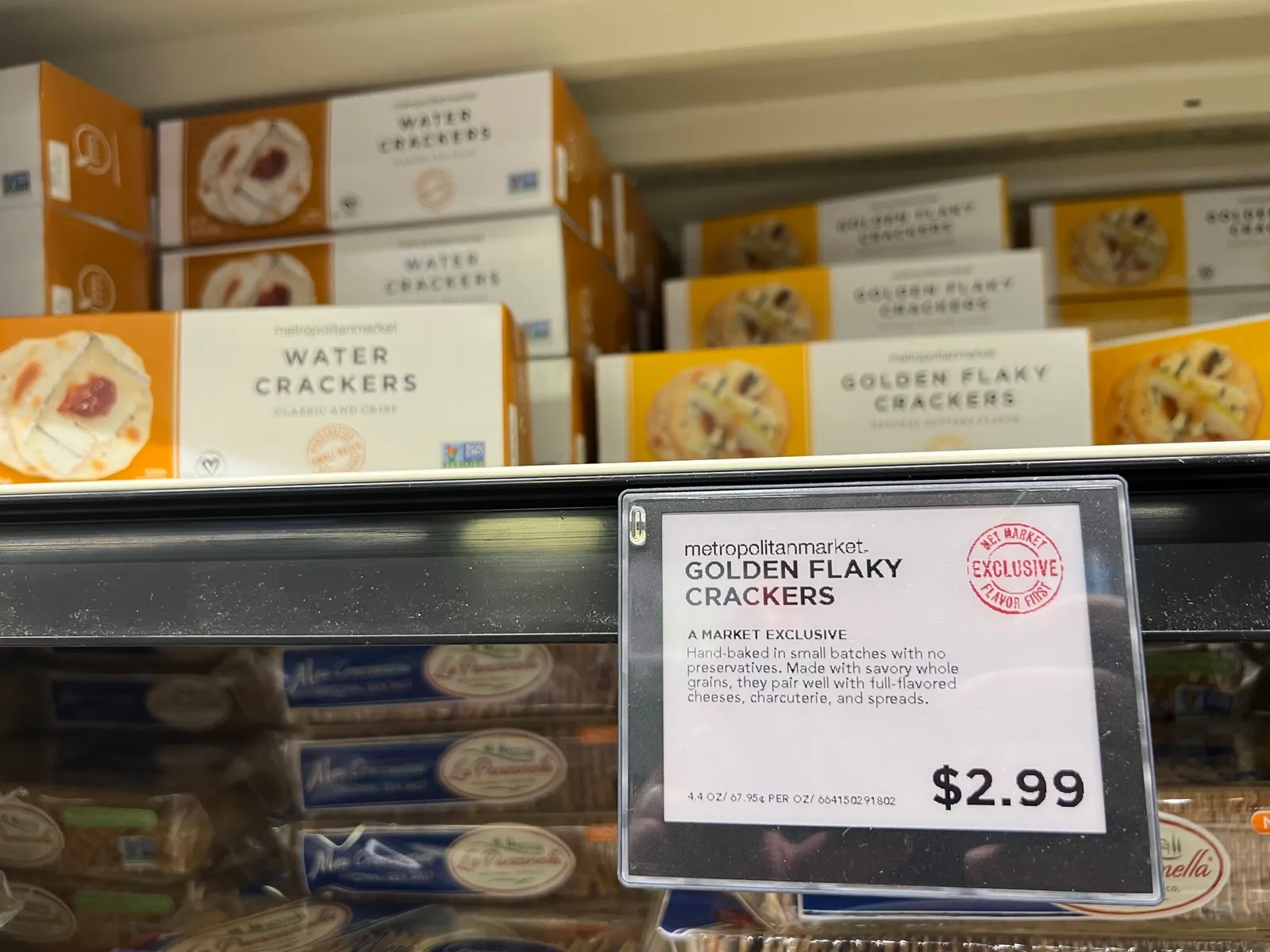
Working behind the scenes
DeGraeve described Good Food Holdings as “half corporate and half holding company” — a firm that aims to provide strategic oversight to support its banners, each of which has their own executive team.
Good Food Holdings has the benefit of being able to scale solutions across its stores after running specific tests that can be focused on one banner or specific customer demographic. The goal is to create common tools and transform back-end systems, DeGraeve said.
Good Food Holdings communicates with each banners’ leadership team to understand what kinds of areas they are looking to address. When the time comes for a banner-wide change, like a new website or merchandising system, DeGraeve said Good Food Holdings works with a team made up of both centralized and banner leadership members to evaluate solutions.
Having a cross-banner team helps ensure that everyone is on the same page and that resources are aligned, DeGraeve said.
This corporate structure is roughly similar to what Ahold Delhaize, with its collection of East Coast banners and centralized technology and supply chain resources, has built over the years to stay ahead in the supermarket industry — albeit on a much smaller scale.
Project proposals go through an internal justification process that looks at questions like: What problem am I trying to solve? What will implementation require? What are the impacts on capital and human resources? How am I going to measure it?
Good Food Holdings recently went through this process when it decided to begin adding self-checkout stations early in the pandemic. The company first piloted the checkout method in the Seattle market before rolling it out to more stores, Stern said, noting self-checkout will be available across all banners by August.
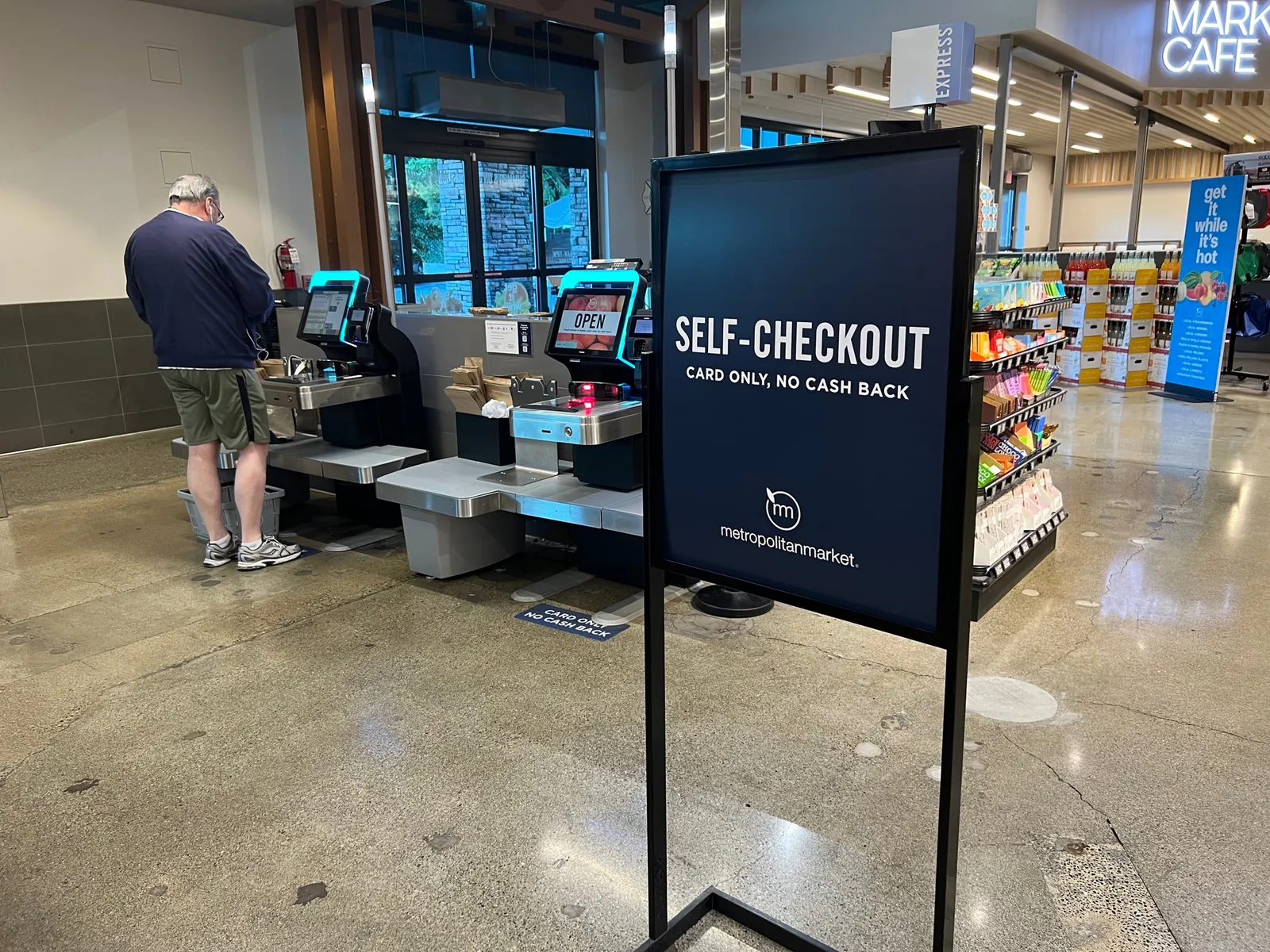
Good Food Holdings will typically test one tool or technology in one banner and then try another in a different banner, allowing the company to run multiple pilots simultaneously, DeGraeve said: “That's an advantage of having these five banners under one umbrella.”
Even though customers are a little bit different for each banner, they share attributes of being more premium, highly educated customers with a focus on healthy products, Stern and DeGraeve said.
A banner with a passion for a certain innovation or technology will usually take the lead on trying it out, DeGraeve added. Bristol Farms CEO Adam Caldecott, for example, has a goal of eliminating all lines, Stern said.
“If they're not waiting in line, they could be shopping, right? They could be doing other things and ordering [in] other places in the store,” Stern said.
“Customers are kind of channel agnostic. So that's how we have to treat it — however they want to shop, we should be able to provide them a way to shop like that."

Scott DeGraeve
Chief digital officer, Good Food Holdings
Hurdles and headwinds
Good Food Holdings recognizes that it will never be able to tackle all of the items on its long wish list of digital tools, Stern said.
“At some point, you have to go through the filtering process of: What do you prioritize?” Stern said, noting solving customer needs, getting a return on investment and reducing labor costs are top considerations.
Good Food Holdings has also had deal with economic and banner-specific challenges. High inflation has spurred many shoppers to trade down from high-end grocery stores in recent months, putting pressure on chains like Bristol Farms and Metropolitan Market to prove their value. Good Food Holdings has also had to stabilize New Seasons Market, which it acquired in 2019, after that chain over expanded and had to curtail its growth plans in recent years.
Good Food Holdings is also undergoing some legacy system transformations with its merchandising systems and data warehousing — changes that DeGraeve characterized as less about digital innovation and more “backbone” initiatives. Good Food Holdings has already upgraded its stores to have higher network bandwidth to support more digital innovation, Stern said.
Some of the innovation to fuel Good Food Holdings’ long-term vision is a waiting game at the moment.
Good Food Holdings wants to do a “deeper dive” into diet and nutritional data that goes beyond labels like “low-fat” and understands diet and health, where a nutritionist could code up products that suit people who have high blood pressure or have other wellness needs. But that type of offering is still too nascent, DeGraeve said.
In another example, Good Food Holdings has its eye on sidewalk-roaming delivery bots but hasn’t determined yet if that type of technology is worth piloting, DeGraeve said. Good Food Holdings is also “playing around” with Simbe, the aisle-scanning robots that grocers like Schnuck Markets and SpartanNash use, Stern said.

Metrics are another challenge, DeGraeve and Stern cited. Having “good, clean, centralized” data is a challenge, Stern said.
“A bag of Oreos might appear in our system — same product — three different ways,” Stern said.
As online sales continue to grow, DeGraeve said Good Food Holdings and the grocery industry overall will be faced with finding ways to improve e-commerce profitability.
“Finding ways to take costs out is also going to be important as you have a bigger percentage of your sales coming through e-commerce,” DeGraeve said. “There's added costs that go into fulfilling and getting orders to customers.”
While linking data and information in an online environment is easy, such as letting customers shop gluten-free products with filters and lists, translating that to an in-store offering is still a challenge to overcome, Stern said.
“We want to be able to inspire customers [so that] they're coming through our store with the same sort of tools they have in the online world,” Stern said.
He continued: “All that's trying to lead to is when you come into my store, I want you to have the stuff you want when you want it.”
Jeff Wells contributed reporting to this story.



